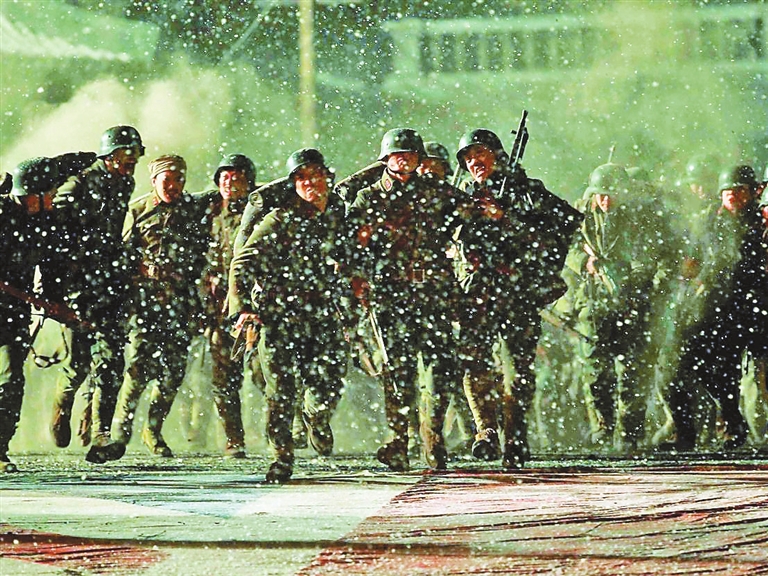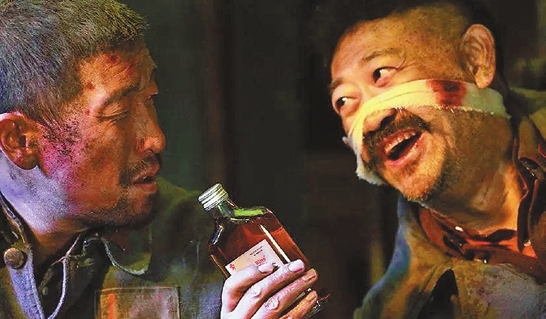

Starring: Ou Hao, Zhang Junyi, Du Chun, Wang Qianyuan, Li Chen, Jiang Wu, Zhang Yi, Xin Baiqing Director: Guan Hu FOUR days feels like an eternity in “The Eight Hundred,” mainland writer-director Guan Hu’s monumental, if sometimes unwieldy epic interpretation of the courageous defense of a warehouse by the Chinese Nationalist Army in October 1937. For those with little knowledge of the Sino-Japanese War, the bombardment of facts, action and characters in the 147-minute film can be too much to take in at one go. But the spirit of the mission, like that of “The Alamo,” should be easy for any audience to root for. Since its mainland release Aug. 21, the US$80 million mega-production by major studio Huayi Brothers has conquered US$165 million at the box office, making it a pandemic-era global theatrical top-grosser. It will go down as a breakthrough not only as Asia’s first film shot entirely with IMAX cameras, but also for its audacity to handle a historical chapter sensitive to both sides of the Straits in a relatively neutral and entertaining light. A director who successfully straddles TV and auteur cinema (his films “Cow” and “Mr. Six” both premiered in Venice), Guan’s eighth feature is unquestionably his most overarching. The central vision that runs through all his works — of survival, fate and the elements — are projected onto a panoramic human crucible. Like the aging gangster in “Mr. Six” or the widow in “Design of Death,” characters in “The Eight Hundred” are constantly forced to make choices and forge their own codes of morality: Officers must decide to obey orders or do the honorable thing, cowards are torn between fleeing or alerting comrades of danger, civilians must choose between bringing aid to the warehouse or staying away from the crossfire. On Oct. 25, Shanghai fell to the Japanese after nearly three months of staunch resistance. Chiang Kai Shek ordered some troops to stay behind as rear guard and to show that Chinese won’t surrender in hopes of winning sympathy at the upcoming nine-power conference in Brussels. So the 542th Regiment from the elite 88th Division of the Chinese Resistance Army (NRA) was sent to hold the fort in Sihang Warehouse (aka China Mint Warehouse), a six-story building co-owned by Shanghai’s four major banks. Joined by less-trained security corps from Hubei, Hunan and Zhejiang, these 411 men were up against the Japanese Third Division, the highest caliber in the Imperial Army. Though their purpose was merely symbolic, the men were expected to die defending the warehouse. They held out for four days. To their advantage, the warehouse was situated across the British concession (aka the International Settlement). Despite their superior provisions, the Japanese had to refrain from bombing or deploying heavy artillery in case it misfired into the neutral zone, thus causing diplomatic fallout. The incident made world headlines, boosting national morale and rallying foreign support. The screenplay by Guan and Ge Rui punctuates each day with a dramatic climax. Aside from hefty battle field pieces, there is no shortage of moving scenes, such as when the men stand naked in rows to take their last bath. The film is also infused with some of Guan’s favorite aesthetic elements, such as Beijing opera, animal imagery and folk culture such as shadow puppets, which give bleak scenarios an uplift of color and poetry. While audiences experience the urgency of combat from thrilling P.O.V. shots of the soldier-protagonists, they also alternate continuously with those on the other shore. Guan is almost didactically invested in charting the concession residents’ conversion from indifferent spectators to cheering supporters. The image of two worlds separated by a river, one blood-soaked, the other luxuriating in diplomatic impunity is a timely symbol of social divides, but their appearance and function become repetitive, weakening the narrative thrust and agency of more decisive players. The movie is now being screened in Shenzhen. (SD-Agencies) | 
